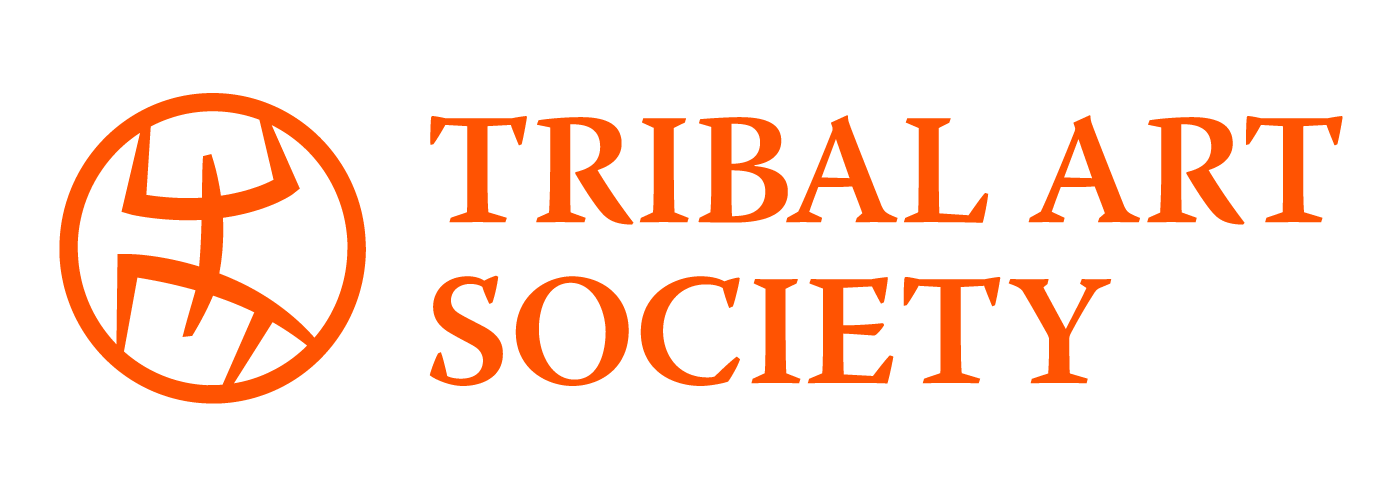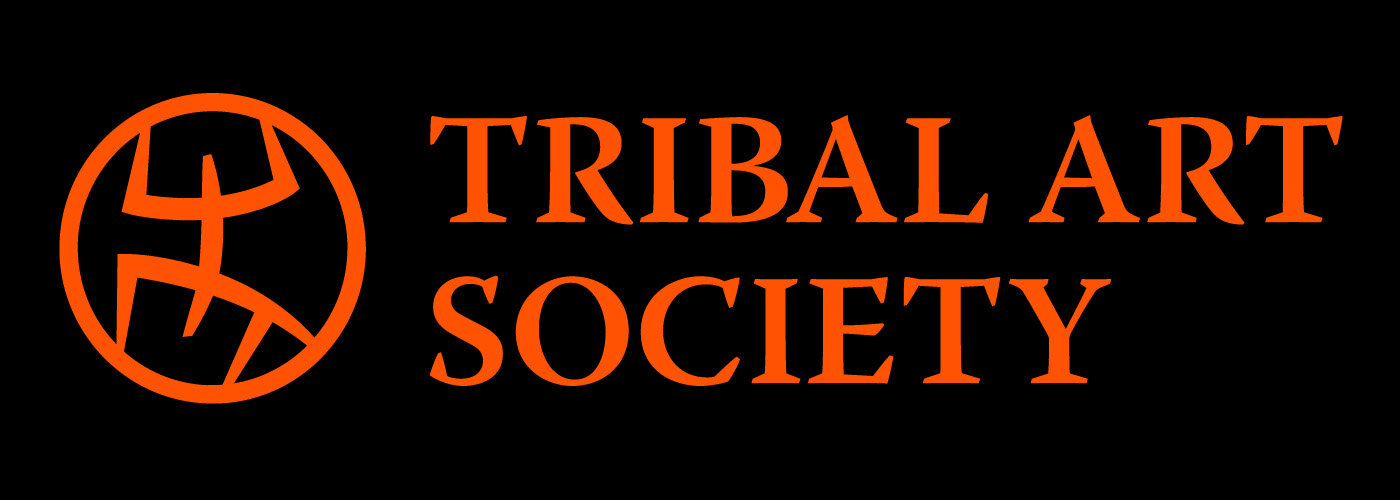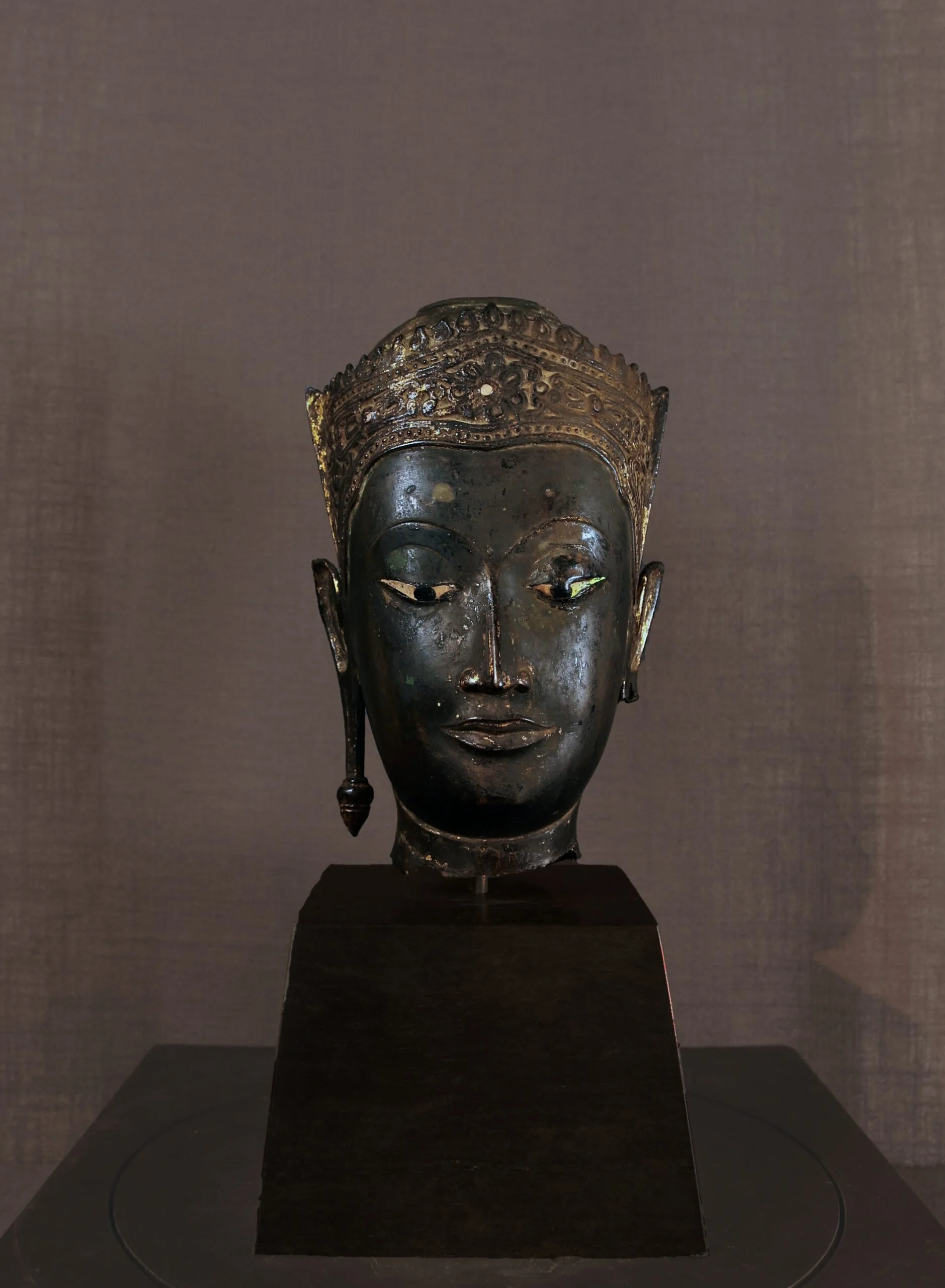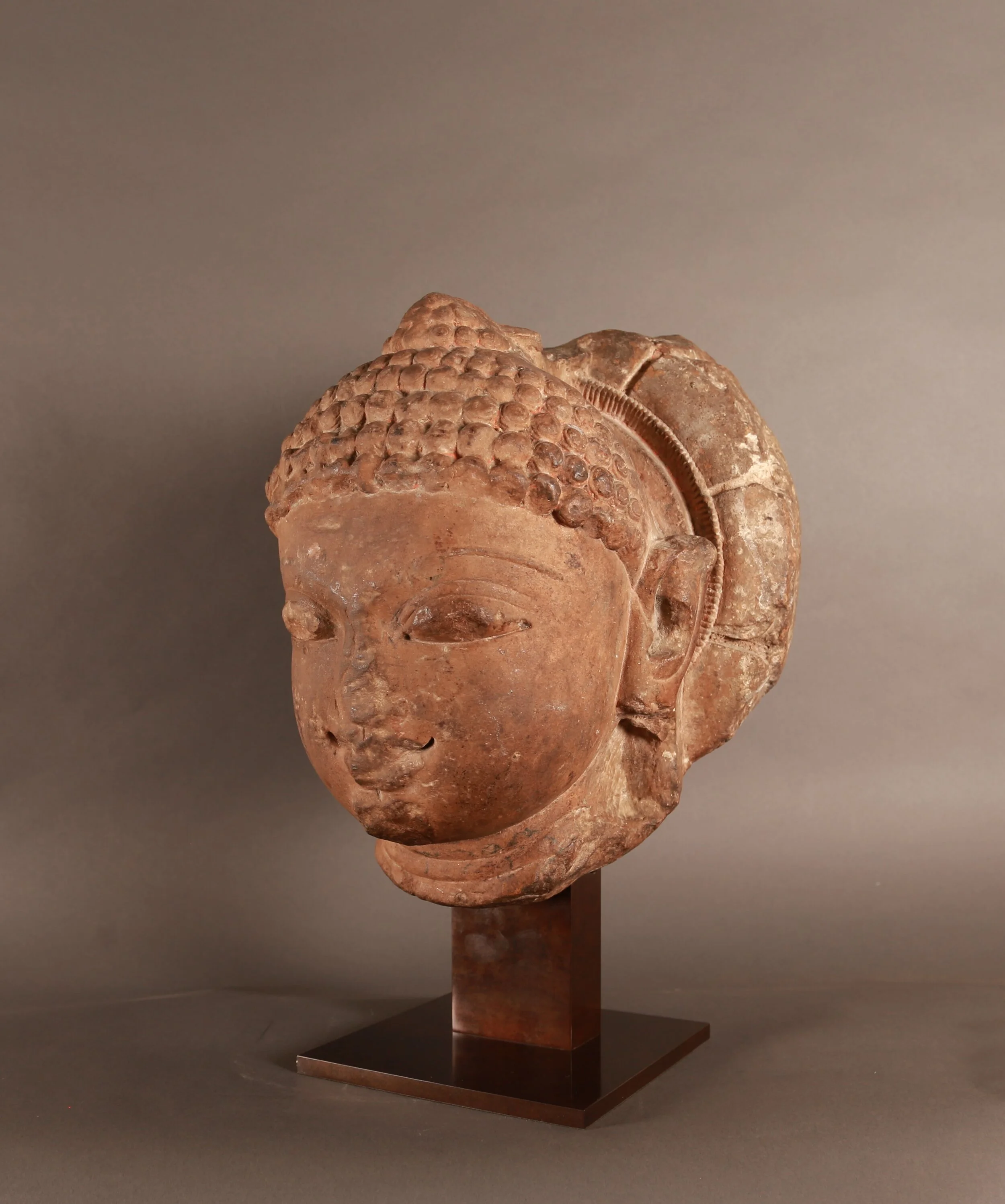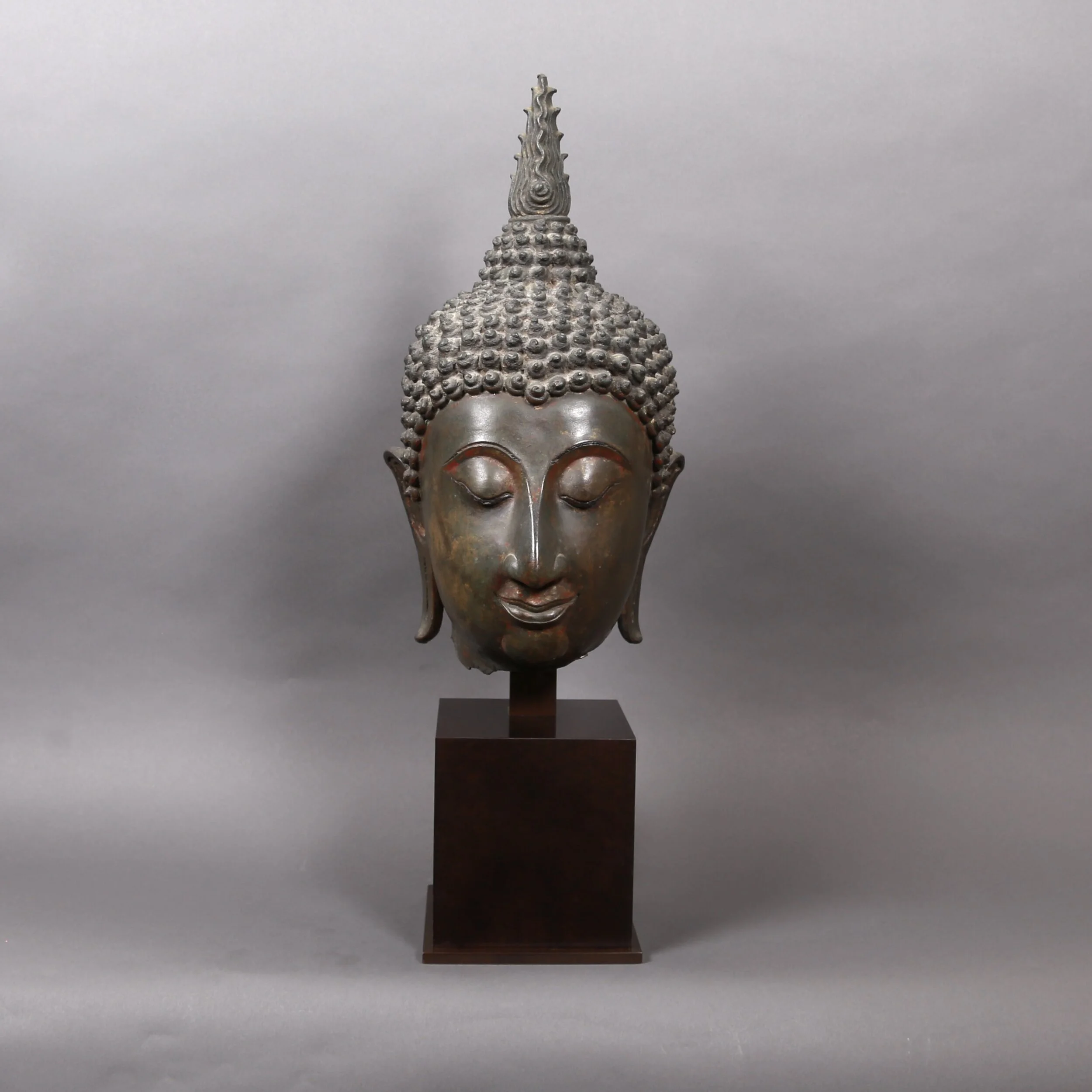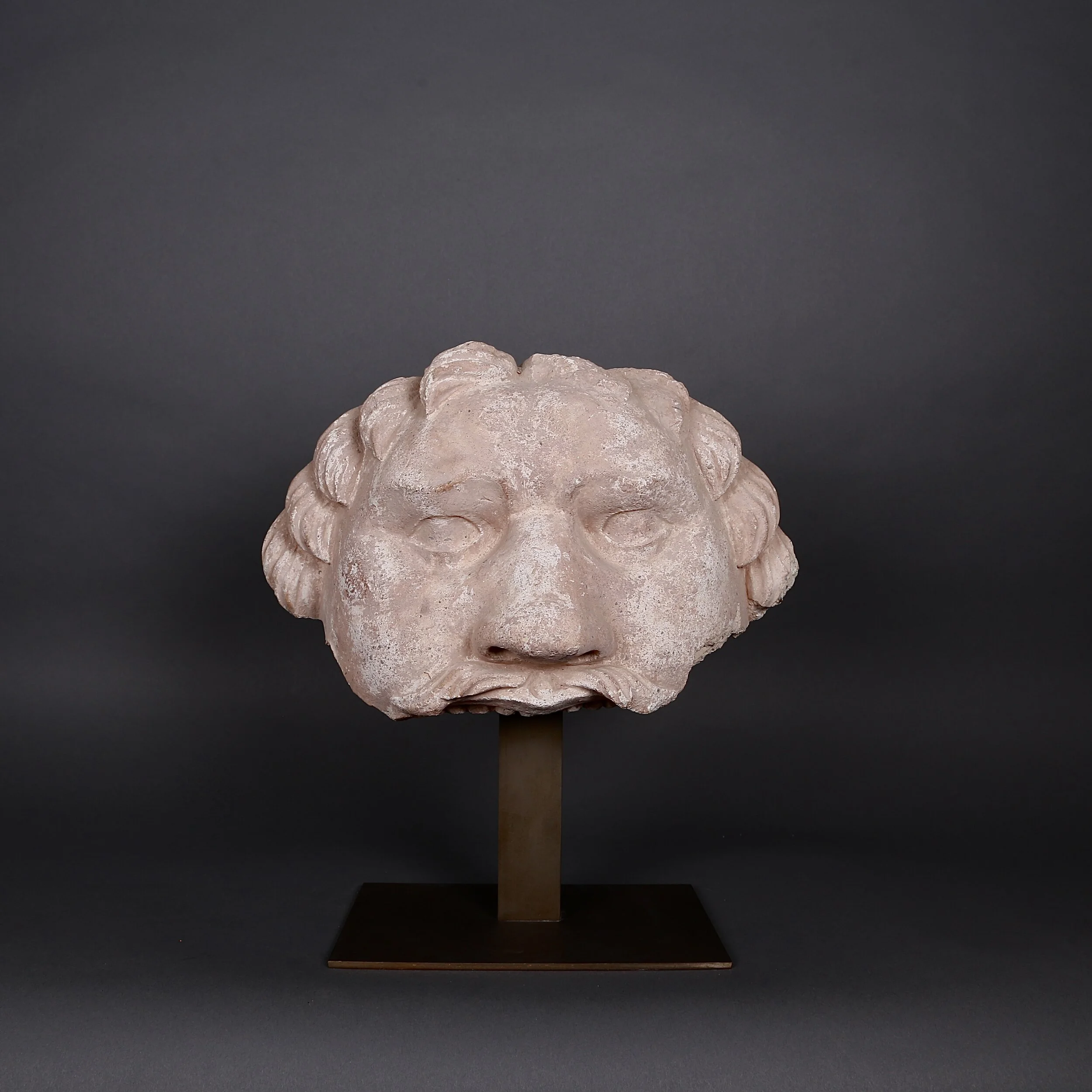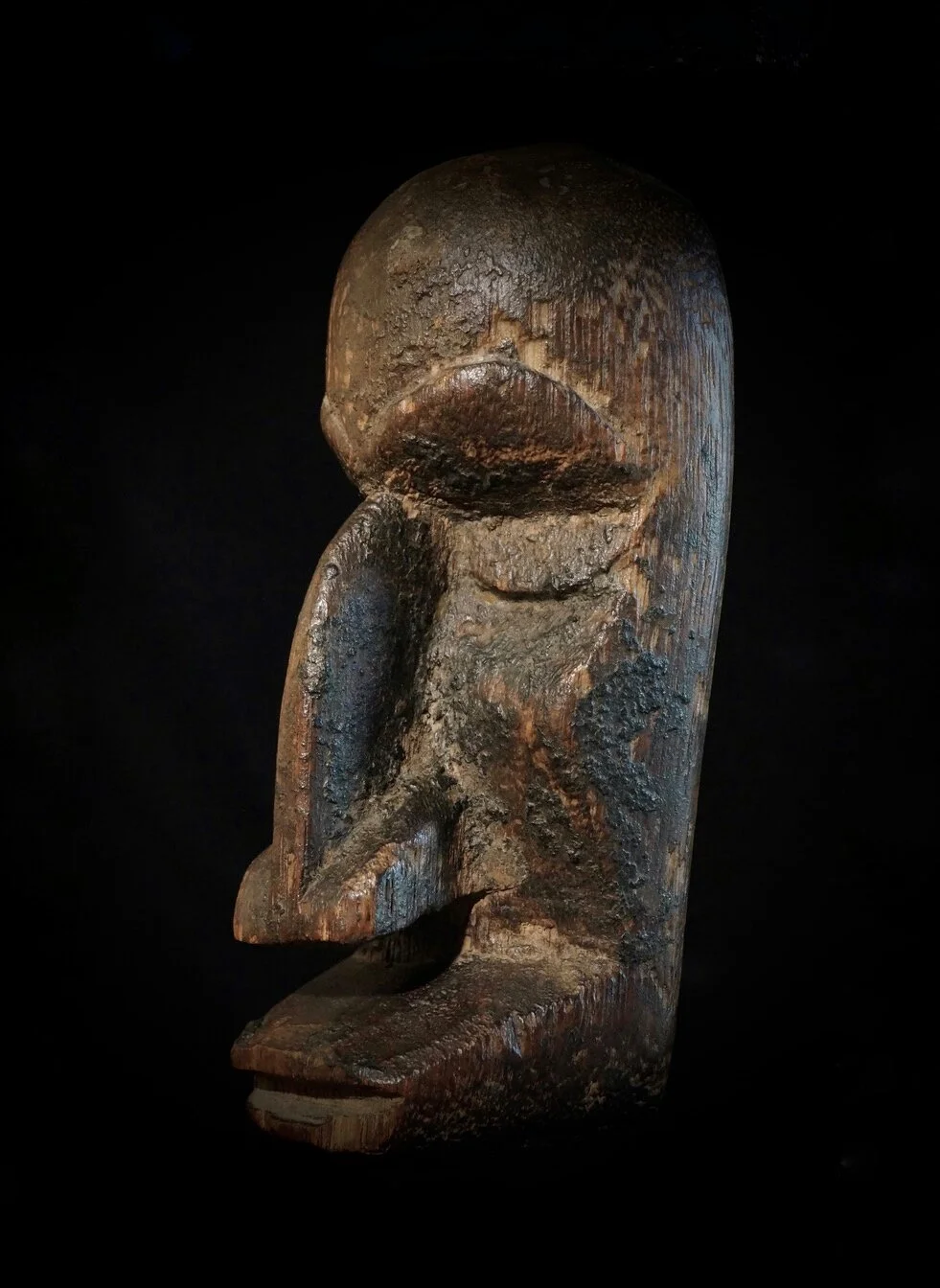VISAGES SACRES
-chaired by Christophe Hioco-
For this exhibition entitled VISAGE SACRÉS, we invited Christophe Hioco, member of the Asian Art Society to present side by side powerful Tribal Art masks and inspiring ancient heads from India and the Indian-influenced regions. This creates an intercultural dialogue that transcends time and space. VISAGE SACRÉS invites us to observe conceptual and intercultural convergences, but also the differences of aesthetic and technical execution of a set of heads,masks and faces. Headdresses, polychromy and materials are the main focus of this dialogue.
“HEADDRESSES”
In the art of India and the Indianized world the iconography is extremely codified. The sculptors strictly follow the religious texts stating the different characteristics of the deities. Nevertheless, each region has developed its own aesthetic and stylistic specificities, giving rise to multiple interpretations of the same iconographic element. This is notably the case for headdresses. In Khmer art, Hinduism occupies, depending on the period, a predominant place and the Hindu gods are adorned with very elaborated diadems. The richness and order of the beaded, floral and geometric decorative registers is often a dating criterion. Behind the tiaras rise highly stylized buns, cylindrical or pyramidal in shape, composed of braided locks. These braided locks are also omnipresent in the hairstyles of Indian deities and often tied with complexity and sophistication, sometimes enriched with pearls and other ornaments. In Buddhism, the stylistic treatment can be very different from one region to another: the cranial protuberance of the Buddha will be systematically represented but in the art of Gandhāra it will be hidden in a bun of waving locks of Hellenistic influence, while in Thailand it will be covered with small curls and surmounted with a flame.
“POLYCHROMY”
The statuary of the ancient Indian world appears to us today in a rather pure form but this is not totally representative of its original appearance. Just as in the West with Greek artworks or Roman and Gothic cathedrals, the sculptures of India, Gandhāra and the surrounding regions were covered with a white coating that constituted the preparatory layer of a rich polychromy that has now disappeared. This coating is sometimes partially preserved in the most recessed parts of the sculptures. Most Thai bronzes were entirely covered with red lacquer and gilding, to which could be added inlays of mother-of-pearl or precious stones. The multiple colors were to considerably change the appearance of these pieces.
“MATERIALS”
For practical reasons, each location of artistic production used primarily the local materials available. In the province of Gandhāra, sculptors will thus make almost exclusive use of schist, a rock split into thin plates, and stucco, i.e. a lime mortar. The latter material, which is very ductile, allows considerable suppleness in the treatment of faces, with a flexible modelling and great expressiveness. The Indian temples and sculptures are mostly made of red sandstone in the north-west and center of India, granite in the south, and black stone in the north-eastern regions. If bronze is present everywhere in Asia, Thailand is the country that gives it one of its most beautiful expressions. The patinas, with more or less brown or green tones, vary according to the polish, the remains of gilding and lacquer but also, and above all, the passage of time.
